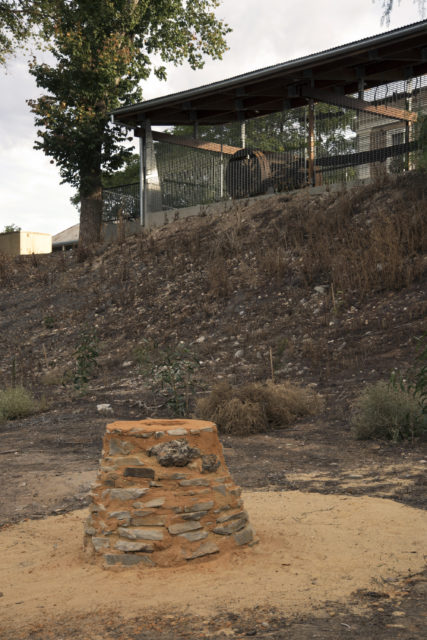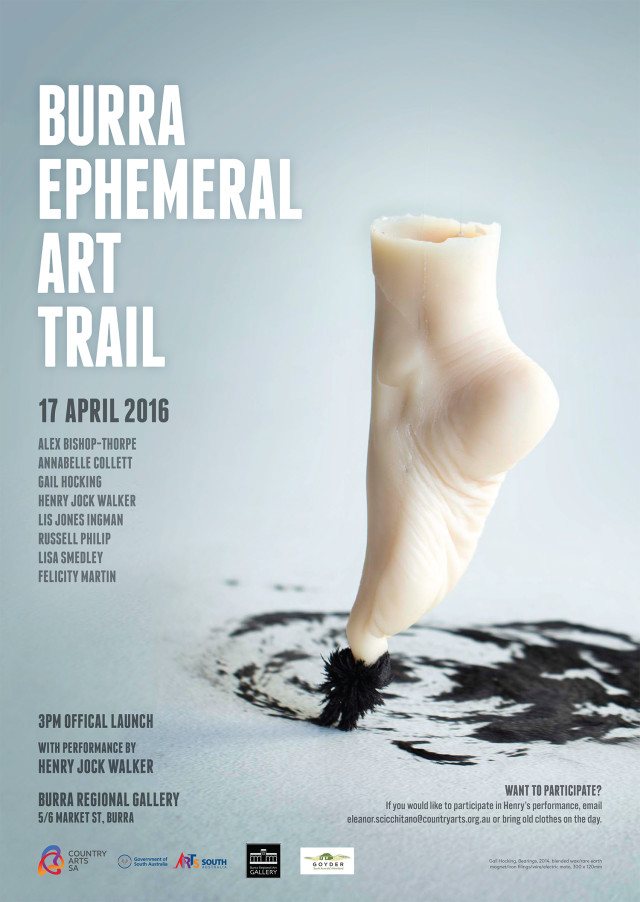Burra Ephemeral Art Trail
The countdown is on for the launch of the Burra Ephemeral Art Trail, with four artists from Adelaide and Clayton Bay who undertook a successful residency working alongside four local Burra artists last year set to return.
The public art trail will reflect experiences each of the artists had during their residencies, with temporary artworks installed through the centre of town. Join us at 3pm for the official launch with a painting performance by Henry Jock Walker across from the gallery next to the skate park.
Each of the artists has taken the experiences they had while in residence as their starting point.
HENRY JOCK WALKER
The Expanding Paddock of Agricultural Expressionism, 2016, paint, tractor
An ambitious, spectacular community collaboration street painting.
While in Burra for seven days in August Henry concentrated his energy on interacting with people as much as possible. Many locals and people passing through were very open to contribute to the large team canvas painting performance!
The Expanding Paddock of Agricultural Expressionism is an exciting large scale variation of this community/agricultural painting machine. Combining the use of farm machinery, some Henry painting tools, the skate park as a blank canvas and simple but extreme idea of painting, pushing the boundaries in what a painting can be how it can be created in a public collaborative and Burra realm. Burracoota!
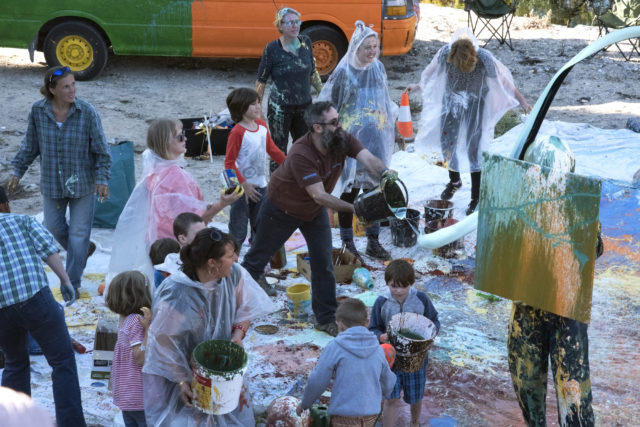
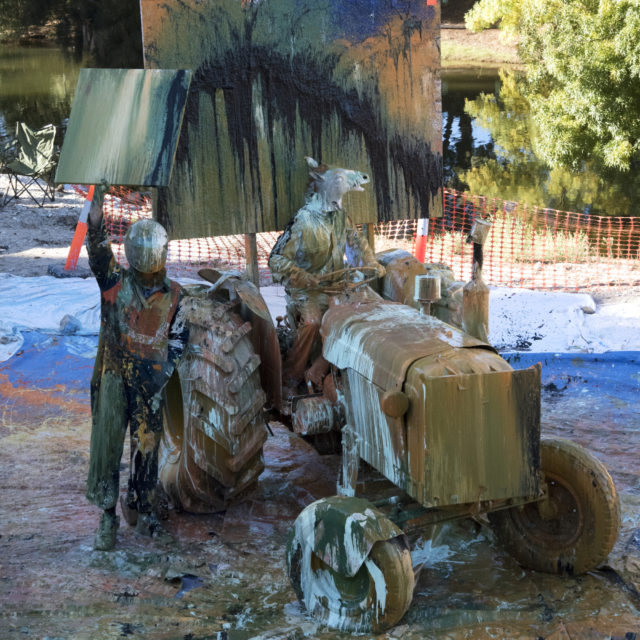
ANNABELLE COLLETT
Elements of surprise, 2016, decorative dangles, bridge weaving sourced from recycled plastics
The Market Street Bridge has its first incarnation as a suspension bridge, built in 1889 to allow the children of Burra to attend school. Since this time the creek has flooded numerous times and washed away or damaged this important link between the suburban dwellings on one side of the creek, and the commercial
centre of the town. Over its 127 year history the bridge has been rebuilt and upgraded numerous times, and continues to provide an important link between the caravan park and the main street.
Elements of Surprise celebrates the history of the bridges of Burra. Decorating this historical site with bright, eye-catching elements and woven patterns draw the passer-by’s attention to the elements of this bridge. The use of recycled plastics to create these decorative elements reflects the bridge’s history of regeneration.
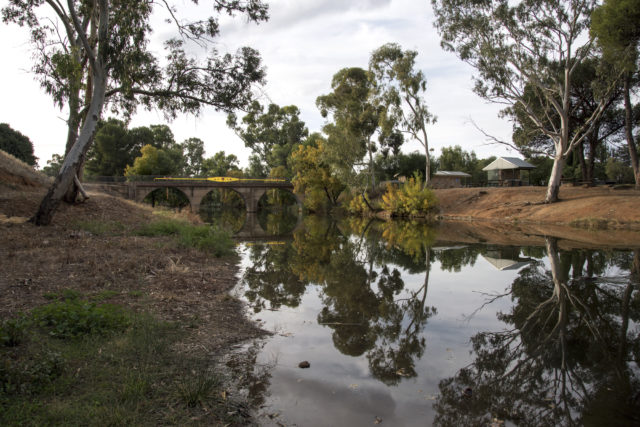
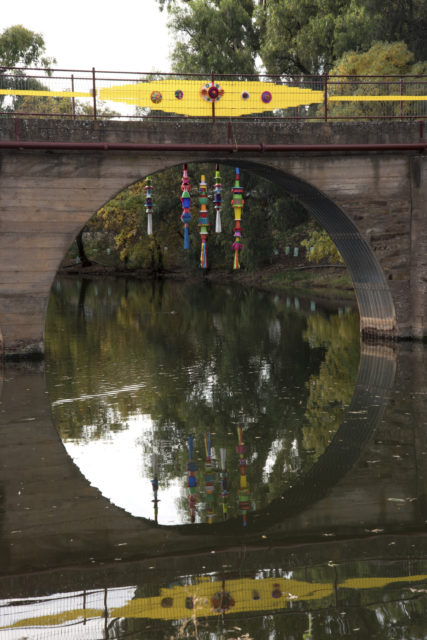
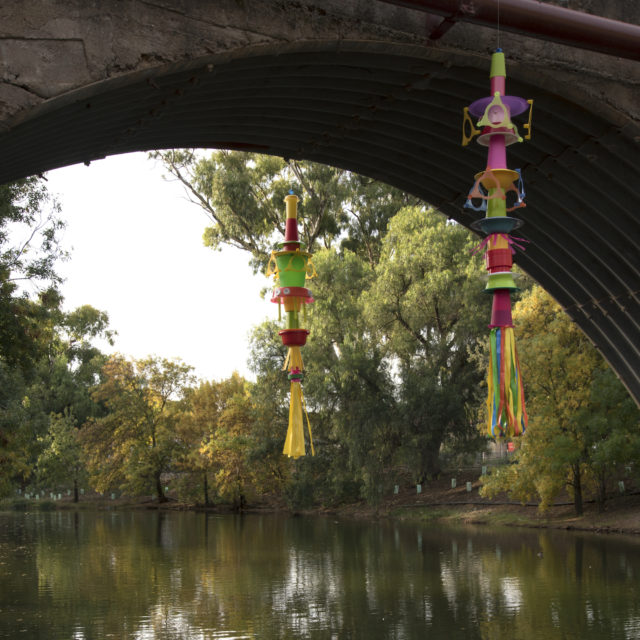
GAIL HOCKING
Disturbing a silent voice, 2015-16, wood, cement, muslin, illuminative aggregate, wire
In my practice I investigate and endeavour to capture the unseen forces and spaces that surround us. Working In-situ with ephemeral elements creates an opportunity to explore spatial dynamics with the purpose of evoking an unsettling bodily response or experience of displacement in the spectator.
After considerable research into the historical and environmental background of Burra I responded to this site of the dry creek-bed because of its past association with the colonial settlers and the indigenous Ngadjuri people. Drawing on the settler’s displacement and extinction of the Ngadjuri people and their identity, I attempt to evoke an intangible echo of the lives that embodied this space. I harness the Aeolian Sound produced by the unique position of the displaced branches to capture the sites energy. The vibration of stretched wires creates a tonal hum that alludes to the lost ‘voices’ which once dominated the site.
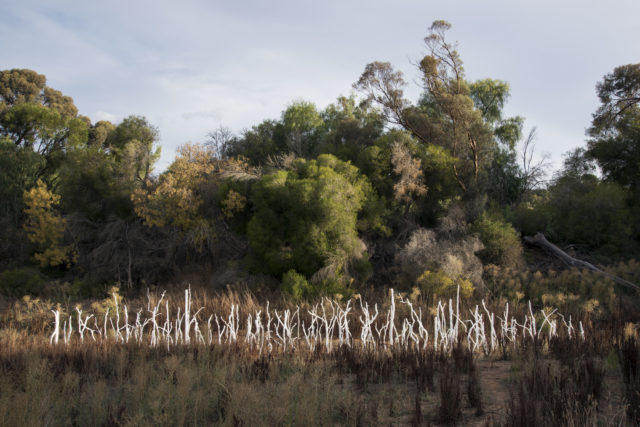
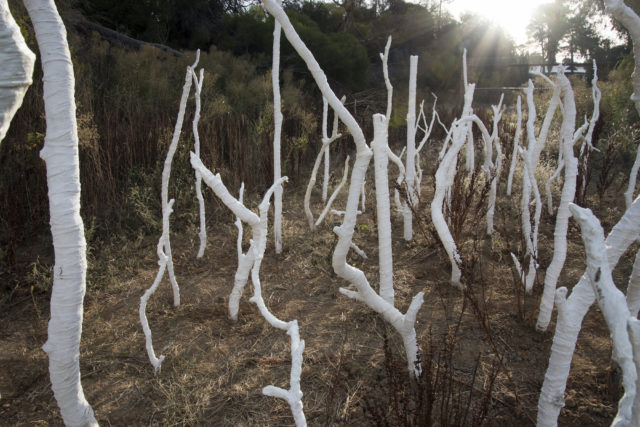
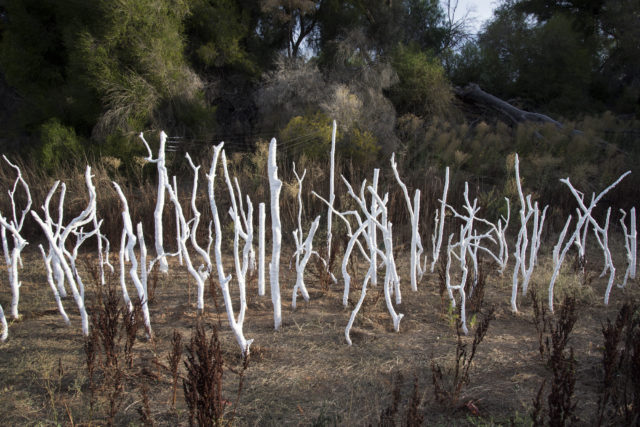
ALEX BISHOP-THORPE
Laterna Magica, 2016, pine, MDF, perspex, chemistry, fabric
Laterna Magica draws on Alex’s practice of experimentation with photographic processes, interactive installations and the photograph as a physical object and prop of performance. He has transformed this empty shop into a camera obscura, drawing on his experiences while a resident in the town. Over the course of its life the camera will record an image of the main street of the town. The long exposure will ensure an image that is solid in places, but also reflects the movement and shadows of passerbys and the activity of the community. Once the exposure is complete, the image will be hung in the window of the shop for audiences to enjoy before it slowly fades away. This work explores Alex’s interest in how the photograph distorts and expands our lived experience, both in its making and viewing.
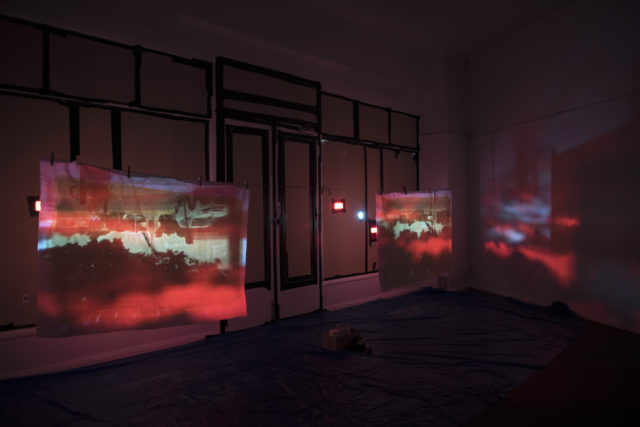
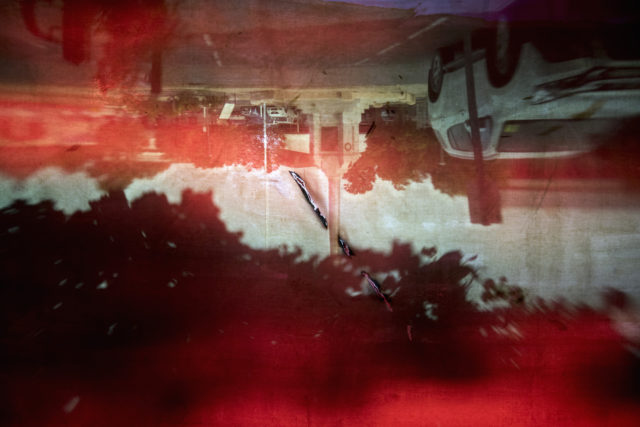
DOWN TO EARTH
Five Symbols Walk, 2015-16, mixed media
Artists: Lis Jones Ingman, Russell Phillips, Lisa Smedley, Felicity Martin FIVE WORKS ALONG THE BURRA CREEK
Burra Creek, until recently choked with weeds, is now undergoing intensive revegetation. Before white settlement, this was the pathway between parts of the Njadjuri lands from north of Terowie. It is a place where the big gum trees grow – shady, sheltered and safe, except for occasional floods.
A hundred and sixty years ago Burra was the third largest town in Australia, due to the copper mine on the hill. Along the creek at its base intrepid miners developed rent-free housing for their families. Dug into the banks of “Creek Street”, these underground structures, some with up to eight rooms, sprouted chimneys dotting the edge of the main road. The road linked the different parts of town, the mine and its buildings, and the busy family dwellings.
